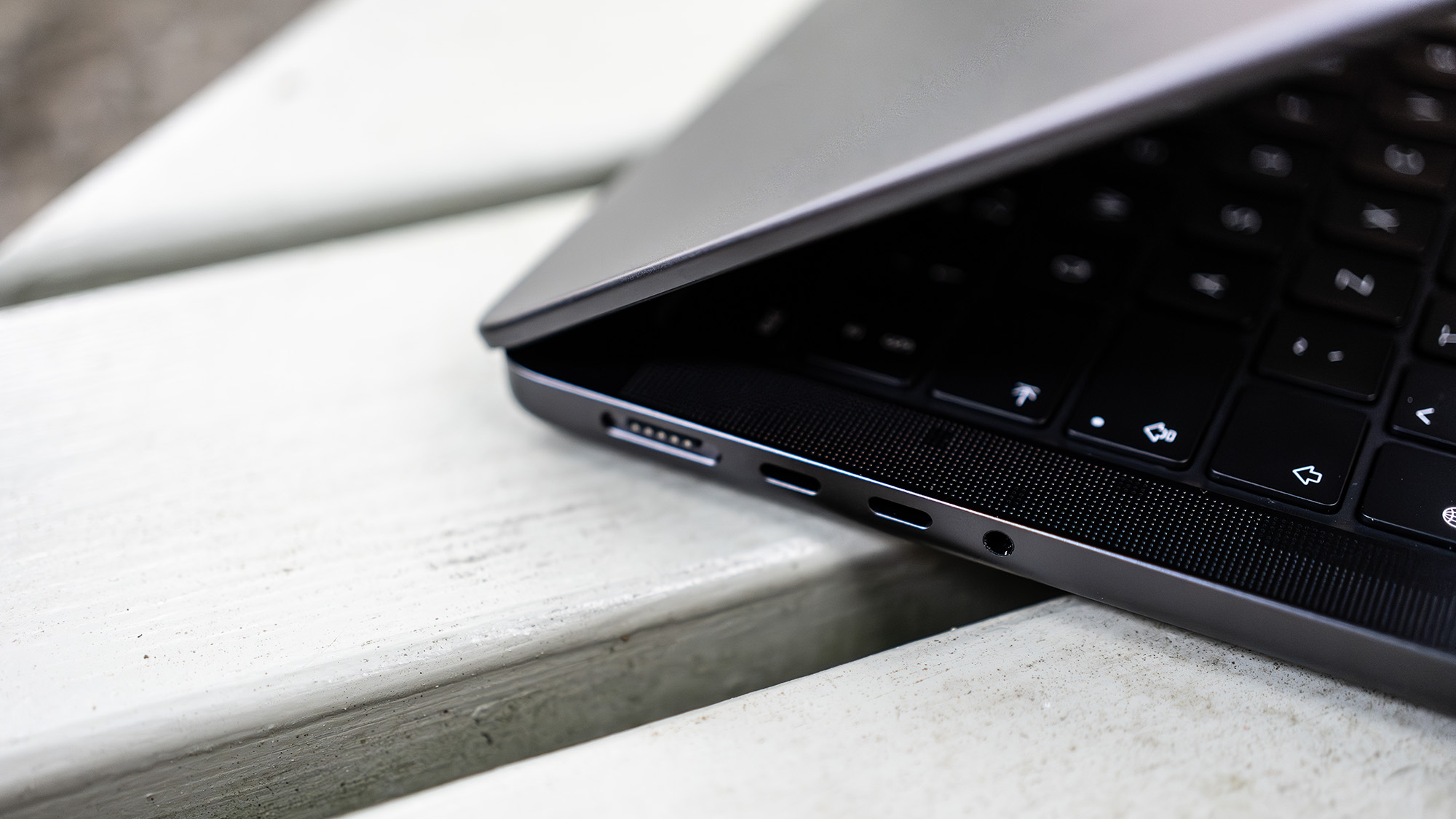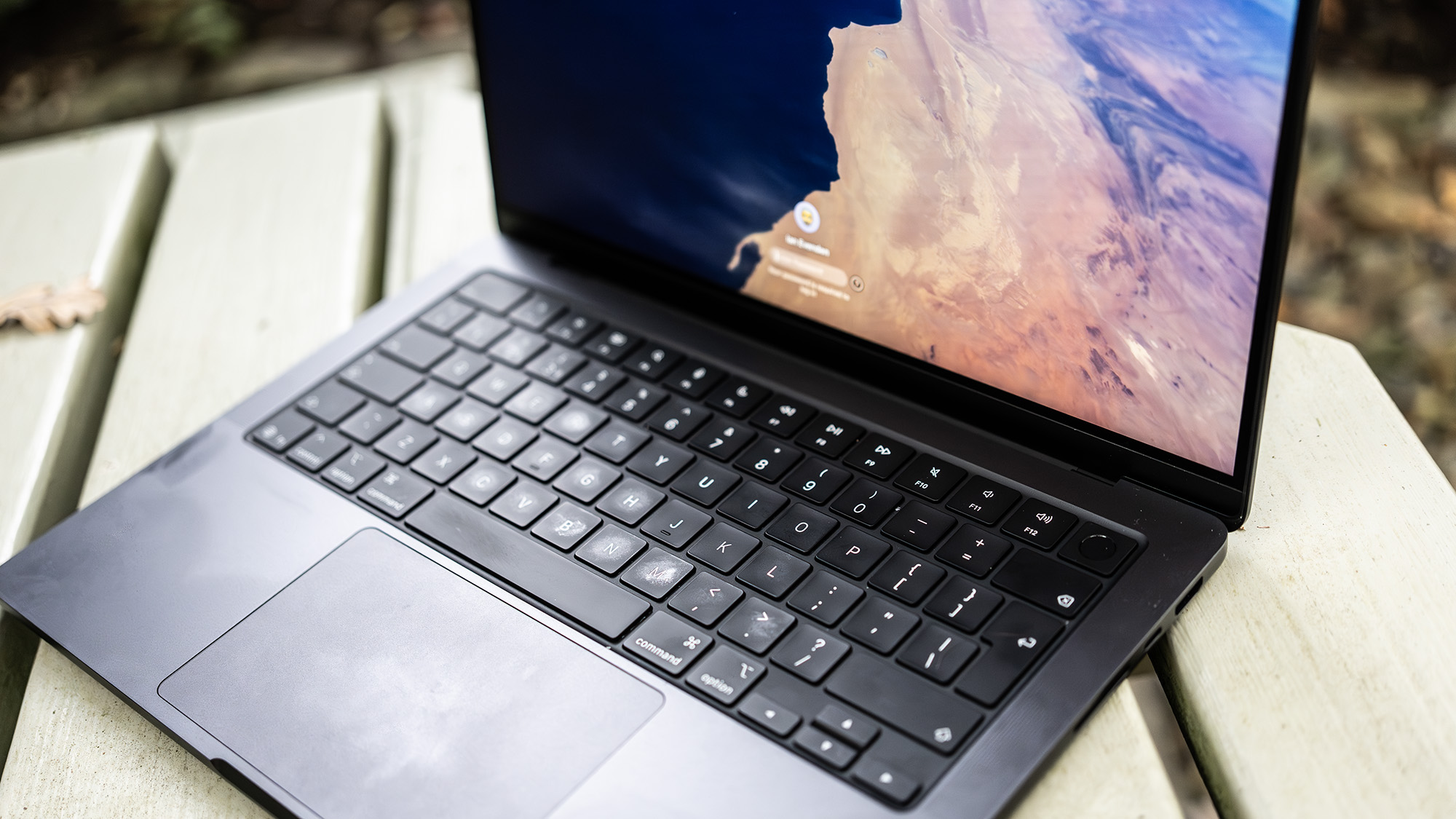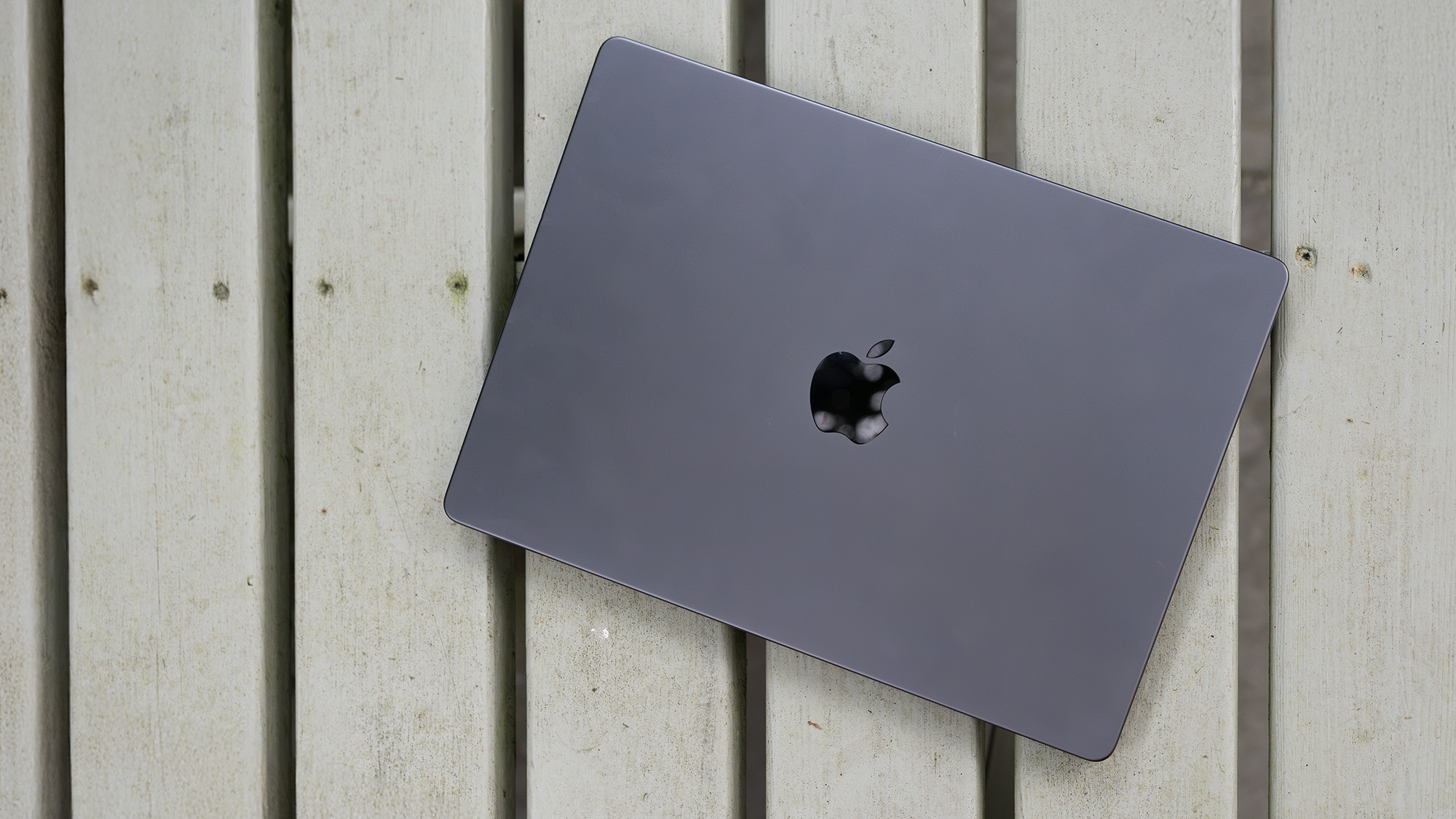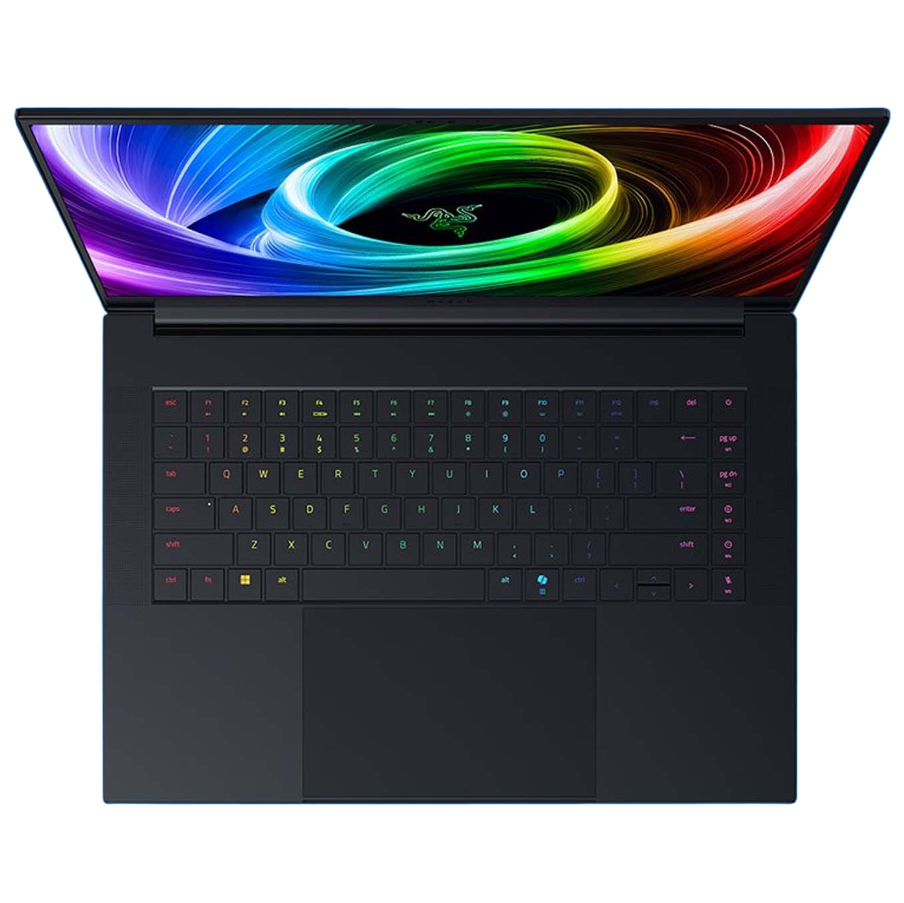iCame, iSaw, iConquered: With its new M5 chip, the Apple MacBook Pro is now a gaming PC. Just, y'know, without the games
The undisputed king of integrated graphics when it works.

As my muscular colleague Jeremy pointed out already, Apple has been making gains. It's doubled the single-core performance of its in-house chips, the M-series, in five years, and while the predicted single-core score in Geekbench 6 for the new M5 was 4100 (based on the M5 iPad Pro), in my actual testing of a 14-inch M5 MacBook Pro that figure is 4310.
You know what else scores 4310 points in that test? Nothing. The Ryzen 7 9800X3D? 3332. The Core i9 14900KS? 3238. The Core Ultra 9 285K? 3214. When Apple claimed the ARM-based M5 had the best single-core performance in the world, it sure meant it.
But can it game? While you used to be able to buy desktop Macs with Radeon cards in them, we haven't seen that for a while, and no M-series processor has yet been paired with any kind of discrete GPU. Apple instead relies on the integrated graphics cores and, for more powerful desktop machines, its ability to literally glue multiple chips together to increase their number, brute-forcing a solution to the problem by throwing more silicon at it.
I tried it out already with an extraordinarily expensive Mac Studio containing a 16-core M4 Max CPU with a 40-core GPU, but what I'm attempting to play games with here is a standard M5 MacBook Pro. It's got a few upgrades—32 GB of RAM and a 4 TB SSD—but nothing that actually increases its ability to process graphics. It's a lovely laptop to use, with what Apple calls a Liquid Retina XDR screen (something the rest of us would call an IPS with mini-LED backlighting). It has a 120 Hz max refresh rate, a resolution of 3024 x 1964, and can display almost the whole DCI-P3 wide-colour gamut for a vibrant image.

CPU | Apple M5 |
CPU cores | 10 |
GPU cores | 10 |
RAM | 32 GB (unified) |
Storage | 4 TB |
Screen size | 14-inch |
Resolution | 3024 x 1964 |
I/O | 3x Thunderbolt 4, HDMI, SDXC slot, 3.5 mm audio jack |
Price |
The CPU is a 10-core model with four performance cores and six efficient ones, and the GPU also gets 10 of Apple's self-designed neutron stars of pixel-pushing transistors. It's made by TSMC on a 3 nm process, and if you put it in an iPad Pro (or presumably an upcoming MacBook Air, though that hasn't been announced at the time of writing) it will run perfectly happily just being passively cooled. The MacBook Pro, on the other hand, has a fan (just one, with a heat pipe, and the SoC can reach temperatures of 99 °C under heavy load) which allows its M5 to do a little more work.
The M5 GPU has a new architecture that integrates a neural accelerator inside every core. Apple has gone all-out for unseen levels of AI compute with this, the company claiming four times the AI performance compared to M4. There's a bit more going on too, as Apple has increased the SoC's memory bandwidth for this generation to 153 GB/s, a 30% jump over M4.
And, since the M3, Apple's silicon has had some clever tech called Dynamic Caching that allows the GPU to allocate its memory usage in real time, using only what is needed in that moment. This, the Cupertino phone company claims, increases average GPU utilisation and therefore performance, though it's not clear exactly how beyond just making the best use of the memory available to it and not having gigabytes of the stuff tied up being allocated to things that aren't actively executing, potentially forcing other apps to page to the SSD. Though as the drive is now capable of more than 6,000 MB/s read and write, even that is less of a problem than it used to be.
Keep up to date with the most important stories and the best deals, as picked by the PC Gamer team.
Apple's Metal graphics API—its equivalent to DirectX or Vulcan—is what M5 really likes, and I can immediately see an example of how much better using Metal for an M chip is when I run the Geekbench test. The GPU workout usually runs in OpenCL, and in that the M5 scores 48,665. For reference, the GeForce GTX 1650 Ti can manage about 45,000. Changing this setting to Metal boosts the score to 76,397 (that becomes GTX 1080Ti or RTX 2060 OpenCL territory). Comparing different chip architectures across different APIs and benchmark tests is the kind of thing that will eventually drive you mad, but any way you care to interpret it, that's a bit of a jump.


When it comes to graphics, Apple is claiming another 30% uplift over M4 in general, and 45% when you look specifically at ray-tracing. In the demanding Cinebench 2024 test, which is based on the Cinema4D 3D animation package, the M5's GPU scores about the same as an RTX 4050.
So, what games can we think of that feature ray-tracing? As it happens, Cyberpunk 2077 is now available on Mac, and Apple has been using it in its product demonstrations to show off its new chips. As an integral part of the PCG benchmark suite, the familiar run through Night City at Ray Tracing Ultra settings is a good place to start.
The M5 can't cope with Ray Tracing Ultra.
It finishes the benchmark run, but with a result of just 11 fps at 1900 x 1200 it's not really satisfactory. Enabling the Metal upscaling (in Performance mode) and AMD FSR features in Cyberpunk, and dropping the graphics quality to Ray Tracing Low, eventually yields an average frame rate of 74 fps, or an average of 58 fps on Ray-Tracing Medium. For a computer more commonly used to design beautiful paper products (like PC Gamer's print edition), edit podcasts or just swank around in coffee shops, it's an excellent result, especially as it's using integrated graphics.
If you look at the 1080p performance of the most powerful integrated graphics on the PC side, either the AMD Z2 Extreme of the ROG Xbox Ally X or the Lunar Lake Arc 140V iGPU, you're looking at either 53 fps or 55 fps respectively in Cyberpunk 2077 with FSR or XeSS on the plain Medium settings. Crucially, that's without the performance-sapping pretties of ray traced lighting.
There's little that can touch the Mac's performance here until you get into discrete GPU territory. But, what else can you play? Well, therein lies the rub, most of the current PCG benchmark suite still won't run on a Mac. Booting up Steam on a MacBook Pro and it's still rather thin gruel when it comes to game support.




So, for further testing, I've had to look back in time a bit.
Total War: Warhammer III has a nice in-game benchmark, and the M5 MacBook Pro can run it at 29 fps at 1920 x 1200, Ultra quality settings and TAA. The game contains a resolution scale, and turning this down to 66% nets you 51 fps. That's not quite what we came here for, however, and to get to 60 fps at that resolution you need to use the ‘recommended' settings, which consist of mostly mediums with a few lows, with FXAA and the resolution scale at 100%.
Up next is Shadow of the Tomb Raider, a prime slice of 2018 benchmarking, which will do 57 fps in 1920 x 1200 at its highest settings, with TAA but no upscaling—a similar result to the GTX 1060 or Radeon RX 590. The Steam Deck needs Low settings to get a similar result. There's also a resolution modifier in this game, and setting it about halfway, with FidelityFX CAS (sharpening) and SMAAT2x (anti-aliasing), you get 74 fps. This result is slightly more than a GTX 1070 will give you at 1080p with SMAAT2x in this game, though without using the res slider.
Then there's our old friend Baldur's Gate 3, a CPU-heavy game. I was able to get an average of 30 fps in 1920 x 1200 using the Ultra preset and TAA. This rises to 38 fps when I add FSR in its Quality mode. Perfectly playable.
So is the Mac now a games machine, thanks to the new M5 processor? The answer to that question in past generations has always been ‘kinda' or ‘if you don't mind spending thousands', but this generation has crossed a rubicon: you're now getting ray-traced experiences at 60 fps, which makes it better than a Steam Deck, or other gaming handheld, or any laptop restricted to integrated graphics.
I mean, it's still three times the price, which surely means no one is going to buy one as a dedicated gaming machine, but it does open up an exciting secret life after hours for this most pro of laptops. Someone just needs to figure out how to expand that game library, maybe there's some sort of abstraction layer that might help run x86 games on an Arm processor…

1. Best overall:
Razer Blade 16 (2025)
2. Best budget:
Lenovo LOQ 15 Gen 10
3. Best 14-inch:
Razer Blade 14 (2025)
4. Best mid-range:
MSI Vector 16 HX AI
5. Best high-performance:
Lenovo Legion Pro 7i Gen 10
6. Best 18-inch:
Alienware 18 Area-51

Ian Evenden has been doing this for far too long and should know better. The first issue of PC Gamer he read was probably issue 15, though it's a bit hazy, and there's nothing he doesn't know about tweaking interrupt requests for running Syndicate. He's worked for PC Format, Maximum PC, Edge, Creative Bloq, Gamesmaster, and anyone who'll have him. In his spare time he grows vegetables of prodigious size.
You must confirm your public display name before commenting
Please logout and then login again, you will then be prompted to enter your display name.

